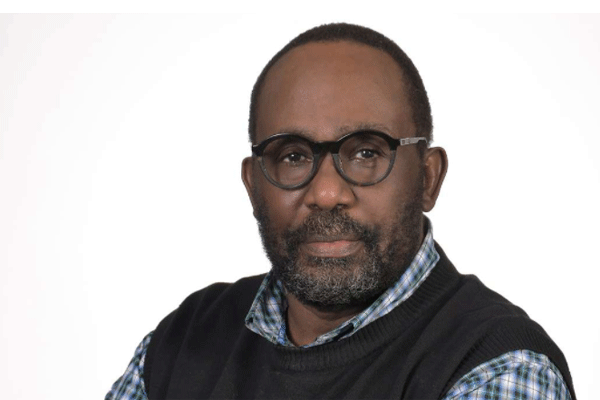Prime
Inside the Uganda-Kenya milk and milking affair

Author: Charles Onyango Obbo. PHOTO/FILE
What you need to know:
- If we can’t do it for ourselves, let’s do it for the cows and as a way to put our hands in Kenyans’ pockets.
Something extremely unusual has happened for the first time in the 19 years I have lived and worked in Nairobi. We last mowed our lawn four months ago.
We are not alone. I have been waiting to hear the sound of a lawn mower in the area for as long, too. We have not seen rain for that long, except for one or two spits. Combined with the chill of Nairobi, which was relatively extreme until late September, the lawns around are brown. The trees and flowers are withered. Only the hardy jacaranda trees gave us some cheer, strewing the area with their purple flowers.
Unsurprisingly, water has had to be rationed. For quite a while, we were down to one day a week in our neighbourhood, so you could only make through adding extra tanks to fill when the water came. A blogger flying over Kenya claimed it looked like a giant rock.
Tanzania also is going through a water-poverty spell. Prolonged drought has reduced water levels in its rivers and reservoirs, all but crippling several hydropower dams. It has now increased its reliance on gas-fired electricity plants, and water is very scarce in Dar es Salaam.
Everyone is pointing fingers at climate change. Clearly, it is a bad time to be a country along the eastern African seaboard, starting from Durban in South Africa along the Indian Ocean’s western flank, through the Gulf of Aden, and the Bab-el-Mandeb strait in Djibouti and Eritrea.
The elements have laid waste to Somalia, and abutting regions in Ethiopia, bringing the worst drought – and starvation crisis – in nearly 40 years. One of the regions closest to the ocean in landlocked Ethiopia is Tigray, which has been at war with the federal government in Addis Ababa since November 2020. Combined with the ravages of Covid-19 (vaccinations were barely done in Tigray), the deadly drought and starvation might have somewhat contributed to the latest rout of the Tigray rebels.
Wasn’t it the French general and political leader Napoleon Bonaparte who said, “An army marches on its stomach”?
All these have real-life consequences, and possibilities, for Uganda. Outside the Karamoja region, Uganda’s lands haven/t been roasted to brown - yet. The biggest problem recently was too much water, in the form of floods – some very deadly.
The recent announcement by the new Kenyan President, William Ruto, throwing the country’s doors wide open for Ugandan milk, which was banned during the latter period of his predecessor Uhuru Kenyatta, has to be seen in that context.
Part of it is because of the shift in Kenya’s political sands. Uhuru came from a family with vast milk interests, owning Brookside, the country’s largest milk processor, which controlled up to 80 percent of the sector according to some overgenerous estimates.
Ruto’s economic interests don’t orbit around milk, so he has a freer hand. But mostly, Ugandan milk, being cheaper, would be more affordable to Kenyan consumers pressed by turbulent economic times. A Kenyan rancher nearly blew the shirt off my back when he explained that if he could grow pasture in Uganda, the yields and cost mean that even with the cost of transport back to Kenya, paying some levies on it, and bribing police at the myriad roadblocks, he would still land it in the central part of the country at just slightly over his current cost of making silage.
There are fortunes to be made here for shrewd Ugandans. Before the 2019 ban, Kenya accounted for 74 percent of Uganda’s milk exports, which totalled $131m (Shs496b) in 2018. A Ugandan farmer with a nose across the border told me that selling silage to Kenya alone would earn the country nearly four times that – at least $500 million (Sh1.9 trillion) a year. There is money in milk. But there could be more in selling grass to Kenya for its cows.
Uganda, however, needs to behave like a serious milk and silage power. First, it is critical to reciprocate with greater access to Kenyan goods (metals for construction, lubricants etc.) and to ease more bottlenecks at the border into Uganda.
Secondly, we need to steward better the resources that give the country this competitive advantage. The water system based around Lake Victoria (Nalubale), River Nile, and Lake Kyoga is a key part of it. Kenya shares 6 percent of Nalubale, Uganda 43 percent, and Tanzania 47 percent. Because Uganda is smaller than Tanzania, relative to our surface area, Nalubale is 12.8 percent of Uganda but 7.3 percent of Tanzania. Nalubale is hopelessly polluted and dying. If we can’t do it for ourselves, let’s do it for the cows and as a way to put our hands in Kenyans’ pockets. After all, there are quite a few Ugandans who care more about our cows than people.
Mr Onyango-Obbo is a journalist, writer and curator of the “Wall of Great Africans”. Twitter@cobbo3





